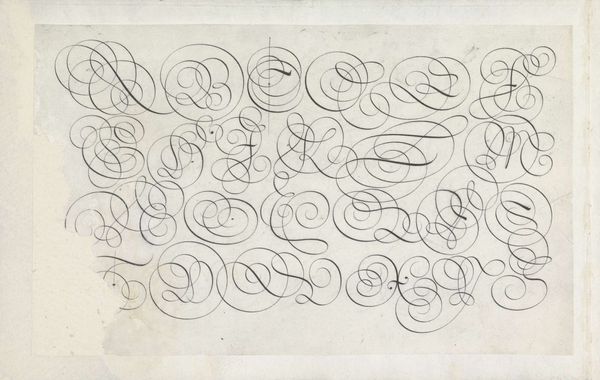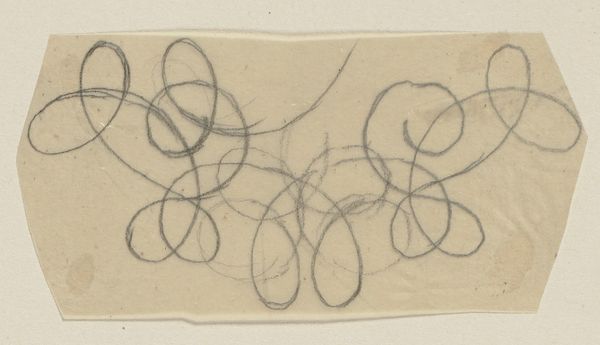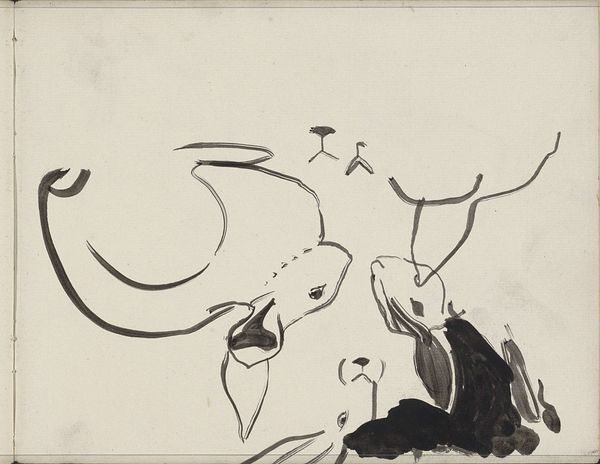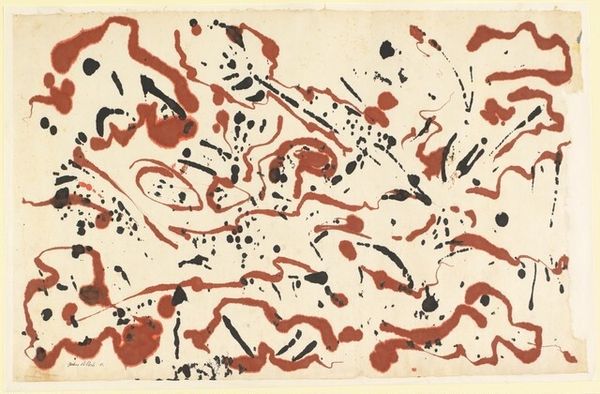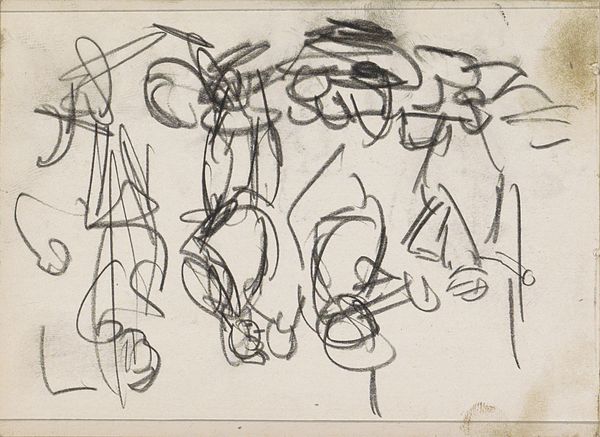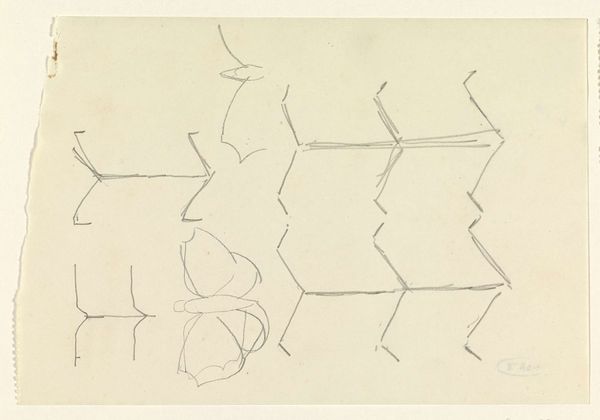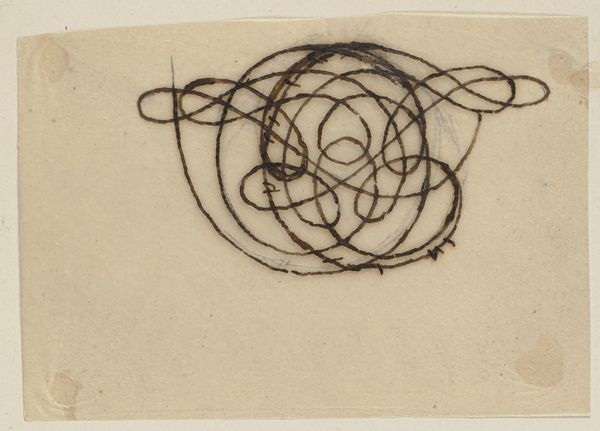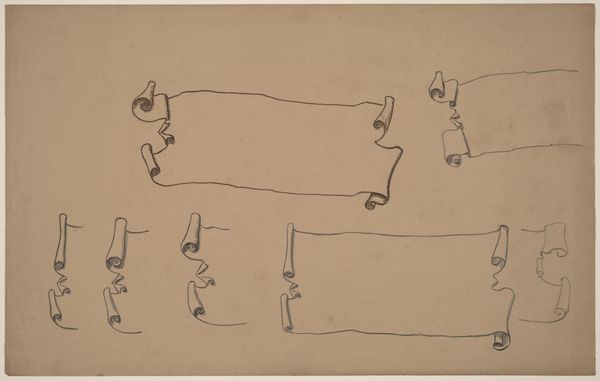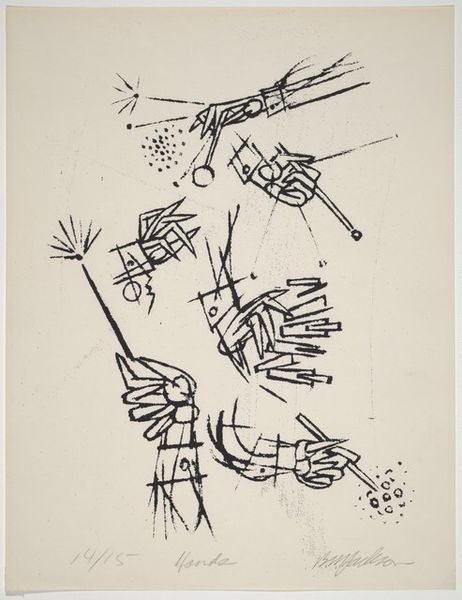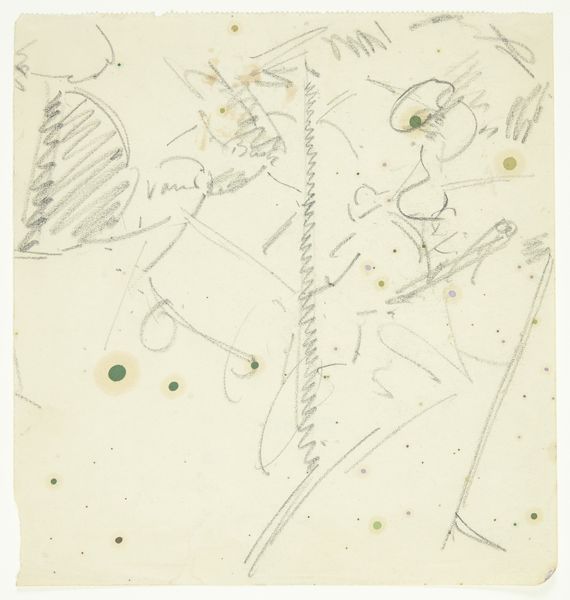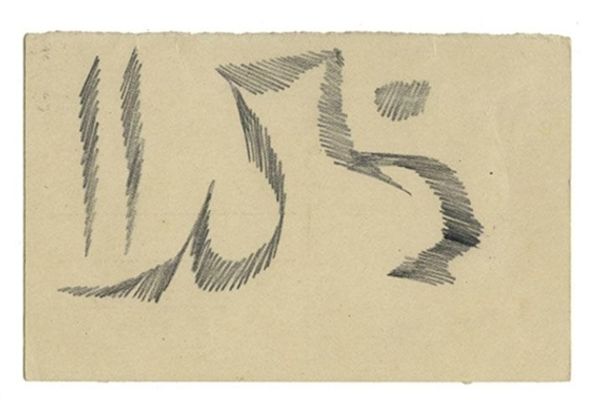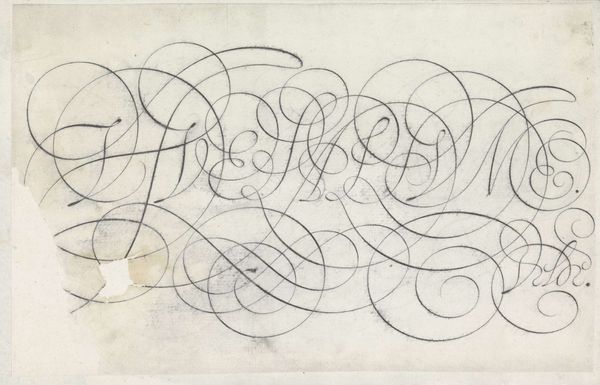
drawing, ink
#
drawing
#
organic
#
art-nouveau
#
pen sketch
#
ink
#
plant
#
line
Dimensions: height 162 mm, width 95 mm
Copyright: Rijks Museum: Open Domain
Curator: This is "Wortelrozetjes van de pinksterbloem" – or "Root Rosettes of the Cuckoo Flower" – a pen and ink drawing by Julie de Graag, dating from the period between 1887 and 1924. Editor: My initial reaction is one of stark elegance. The contrast between the black ink and the pale ground is so graphic, almost like a woodcut. There's a real sense of sparseness. Curator: Indeed. De Graag’s use of line is masterful here. Notice how the variations in thickness and pressure create depth and rhythm. The composition is almost like a musical score, with each sprig a note. The artist's adoption of Art Nouveau’s embrace of nature is striking. Editor: Absolutely. The cuckoo flower, while seemingly innocuous, carries layers of symbolic weight, blooming in spring, a signifier of renewal but also potential disruption given its proliferation, what does that suggest about the moment in which this artist was producing work and how women artists especially were engaging these narratives of disruption? The emphasis on botanical detail, at a time of great social and technological change feels politically engaged. Curator: That's an interesting read, especially in the context of early 20th-century anxieties about industrialization. However, one might argue that the emphasis is primarily aesthetic. The drawing displays characteristics and recurring motifs prevalent within the art-nouveau canon. The linework, forms and botanical subject all support this stylistic reading. Editor: I disagree; to dismiss de Graag's work solely as an aesthetic pursuit risks sidelining her engagement with contemporary social discourses. The stylized rendering, while conforming to art nouveau aesthetics, also serves to idealize nature. We can ask if idealizing nature in itself is a rejection, or perhaps even form of protest. Her deliberate focus on this native plant reflects back the importance of representing local botany during a period dominated by exoticized, orientalist aesthetics, disrupting power dynamics in its own way. Curator: An interesting perspective that casts the botanical study in a broader social light! Ultimately, Julie de Graag offers a deceptively simple image, prompting layered reflections on nature and representation. Editor: Agreed! And reminds us of the potency found within simple lines and forms, especially when viewed through varied, contextual lenses.
Comments
No comments
Be the first to comment and join the conversation on the ultimate creative platform.
